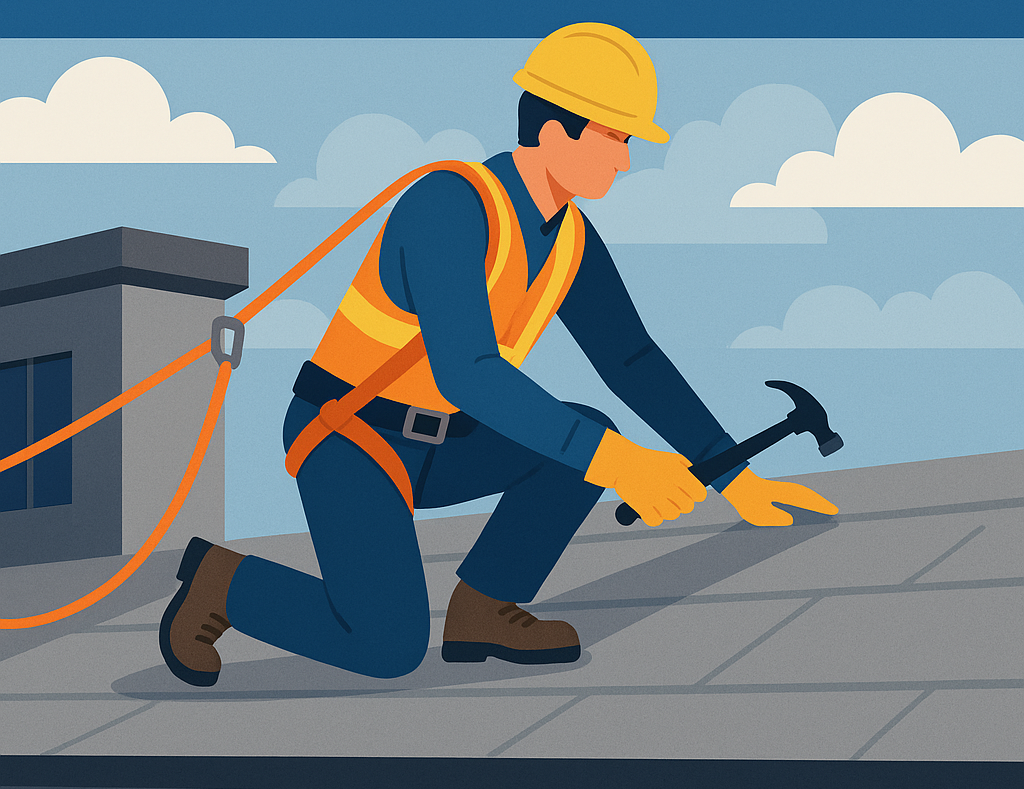We like to think about commercial roofing projects in four distinct respects: materials, labor, general conditions, and safety. Unfortunately, safety falls by the wayside far too often.
Here’s a few of the aspects of safety alone that we make sure to consider and create a plan for prior to every project:
Fall Protection
Lack of fall protection is the number one most cited OSHA violation and cause of death for roofers nationwide. Contractors may have valid criticisms of OSHA regulations in certain instances, but fall protection is not and will never be one of them.
There are a plethora of ways that adequate fall protection can be accomplished. Harnesses with anchors, safety nets, fall protection carts, guard rails, perimeter warning lines, safety monitors can all be used.
There is no excuse for not protecting against falls given the variety of ways protection can be provided and the grave outcomes that can occur on a jobsite without adequate fall protection.
Ladder Safety
Ladders are commonly used on most commercial roofing projects.
OSHA requires that ladders extend at least 36” above the eave of the roof and are properly secured. A simple rule of thumb is four ladder rungs above the surface suffices.
Equipment Use
On most commercial roofing projects, some form of heavy machinery, whether a forklift, crane, or scissor lift, is used daily for materials and/or debris. It is important that ____ and whoever operates any heavy machinery on the jobsite is certified and trained to operate that equipment.
Personal Protective Equipment (PPE)
Personal protective equipment is an easy safeguard against common roofing jobsite hazards.
Commonly used PPE includes hard hats, eye protection, hearing protection, respiratory protection if exposed to airborne contaminants, proper footwear, and gloves.
Hazard Communication
Many of the materials used on commercial roofing projects, such as adhesives and sealants, can create health hazards for workers if not handled properly. Any hazardous materials on the jobsite must be identified and workers must be provided with MSDS (Material Safety Data Sheets) for all applicable hazardous materials.
Summary
Prior to selecting a contractor to perform work on your building, it’s important to vet them not only regarding their quality of workmanship, but also their commitment to providing a safe working environment. In many cases, the latter correlates with the former.

